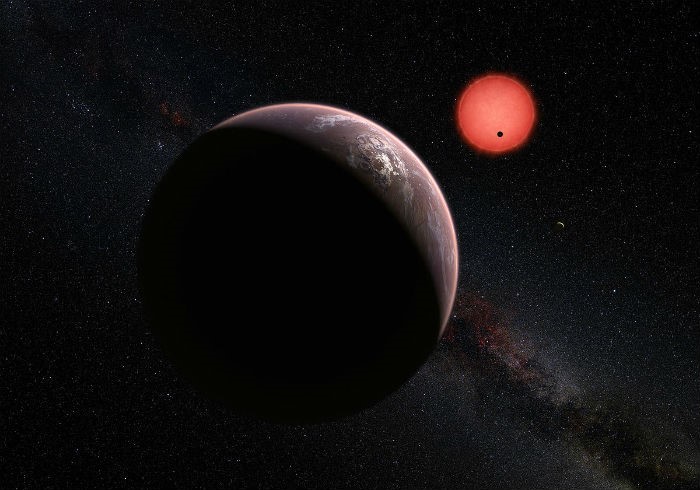The possible existence of extraterrestrial life is one of the most fascinating topics in both science and the general public. Are there other life forms in the Universe? Are there other life forms in our galaxy? We currently don’t have compelling evidence of alien existence; however, the recent discovery of three planets in a potentially habitable region, around a red dwarf star, is extremely important, considering the fact that this kind of stars is widespread in our galaxy.
Do aliens (creatures more or less similar to those that inhabit the Earth) exist elsewhere in the universe? Many are ready to swear not only aliens exist, but even they would have already come to visit us (the famous UFOs).
Others are convinced that we are alone in the universe. Between these two extreme situations are those who actively seek concrete signals of possible existence of life in our galaxy, for example by discovering planets with environmental conditions similar to those found on the planet Earth.
So far, more than 1,000 planets outside the solar system have been discovered; however, most of them have unfavorable conditions for life (too far or too close to their own star).
Three planets orbiting a red dwarf red star (a dwarf red star is much smaller and colder than the Sun) have been recently discovered. The planets are located at a distance favorable for life.
We’re talking about three planets around the star 2MASS J23062928-0502285, located about 40 light-years away from us, about 10 times smaller than our sun. Given that the diameter of our galaxy is about 100,000 light-years, the 40 light-years of the star in question is cosmically a relatively short distance.
The three planets whose dimensions are similar to those of Venus and Mercury, have been discovered by studying the brightness fluctuations of the star they orbit, using the Transiting Planets and Planetesimals Small Telescope (TRAPPIST), installed at an altitude of 2400 meters at ESO observatory in Chile.
When a planet passes in front of the star, its brightness, measured from Earth, varies, the variation depending on the size of the planet and its distance from the star. After the first observations made with the TRAPPIST telescope, more accurate information on the three planets were obtained with the HAWK-1 tool, installed at the Very Large Telescope.
Two of the planets have orbital periods of about 1.5 days and 2.4 days respectively and the third planet has a less well determined period in the range 4.5 to 73 days. Therefore, the planets are between 20 and 100 times closer to their star than the Earth to the Sun. However, considering that the star they orbit is a red dwarf star, which has a surface temperature of 2500°C (Sun’s surface temperature is about 5000°C), the temperature and light reaching the ground of the planets put them just inside a favorable zone for life, even if not optimum. The structure of mini-solar system is much more similar in scale to that of Jupiter, with its moons than to that of the Solar System.
But this discovery is extremely important, given that red dwarf-like stars are quite common in our galaxy. About 15% of stars that are close to the solar system are of this kind. If these stars are surrounded by planets such as those mentioned in this article, it means that there are many places where more or less evolved life forms might be.
Perhaps other such planets might be discovered in the near future. It would be important to find out if these planets have atmosphere or water on their surface. It is hoped that the new instruments that will be developed in the near future will allow us conduct more detailed studies that would allow us find the answer to the question “Are we alone in the Universe?”


